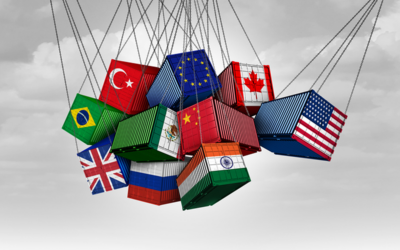Since making a big splash at the end of ’22, generative AI programs, particularly those that generate images, have been drawing a lot of fanfare and criticism around what their use could mean for the future of business. In one corner, tech enthusiasts are singing the praises of democratizing creativity, lowering creative costs and boosting productivity. Opposite them, artists, writers and creatives of all types lament the end of their careers, their skills and the sum of human creativity.
However, both viewpoints paint misleading depictions of the realistic potential of generative AI. While there is no way to tell the future, a more likely outcome places business square in the middle, with a boost to productivity and a possible slimming of the workforce. Either way, generative AI will have a place in the future of agency work.
In case you’ve missed the trend, generative AI is an application of machine learning that generates new output based on prompt. Unlike other AI programs, which typically analyze data for patterns to make predictions, generative AI uses data to create entirely new outputs, usually in the form of images or text.
These capabilities could have multiple applications in business, especially industries like marketing and advertising. Prompts could be fed by creative teams to AI software to generate ideas for copy or design, then further refined by copywriters and designers into a polished, deliverable product. This, in theory, could jump start the creative process and assist creatives in producing content more quickly.
In an era of ever-increasing efficiency, such tools sound great for business and do hold a lot of potential. However, like any technology, these tools have their learning curves and limitations. While producing content is easy, producing good content is much more difficult.
To start with, these programs are machines, not people. It is common for users to put in prompts as if they were talking to another person and get wildly different, and sometimes terrifying, results. There is an art to refining prompts in a way the program can understand. Using these machines will take its own skills set, from formulating prompts to editing AI produced content.
Be aware, you will not generate the perfect output on the first try, or even the next twenty. They are meant to be a starting point or serve as a spark of inspiration, not produce a perfectly polished product.
As with any kind of technology, generative AI does have its limitations, and as an industry that deals with reputation, it is vital that public relations and marketing professionals keep these top of mind when executing.
For content tools, AI cannot fact check. It will say the wrong thing with absolute confidence, but it will still be wrong. This is not a fault on the program, it is a writing tool, not an encyclopedia, but producing content involves more than one skill. For thought leadership pieces and more nuanced writing, AI will be of less help. It does not understand complex ideas. Again, it’s not an encyclopedia, it has limited knowledge of events after 2021, it’s not a real-time program that constantly updates.
Businesses should also be aware of the potential copyright issues in using generative AI programs, especially in art. Mid-journey, an image-based AI, and its parent company, Stability AI, are currently being sued by a group of artists who claim their work was used in training data without their consent. The data sets needed to train generative program are massive, often needing to scrape images from around the internet without providing notice or requesting permission of the owners, including copyrighted works. Getty Images has filed a similar suit in the UK, and Microsoft and Open AI, the developers of ChatGPT, are also being sued for leveraging user’s code on GitHub to create GitHub Copilot, a generative AI for coding.
There is no doubt AI will shape how we do business, helping us to do more even faster. But the need for human creativity and ingenuity is still very real. While creatives and advertisers need to show initiative to use these tools to their benefit, they can breathe easier knowing they cannot be replaced. The relations part of public relations will always have a human heart.


